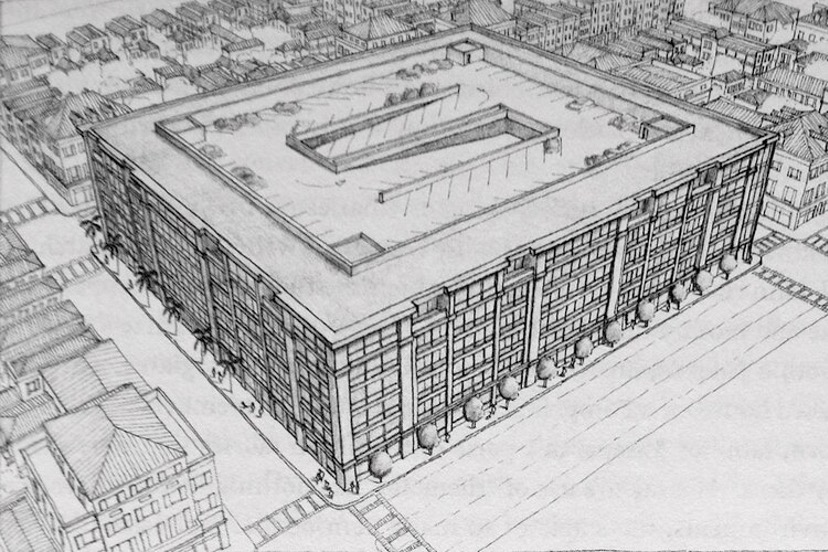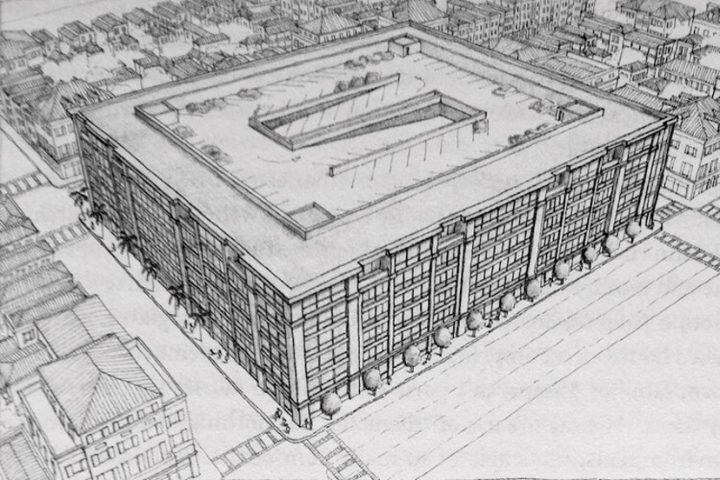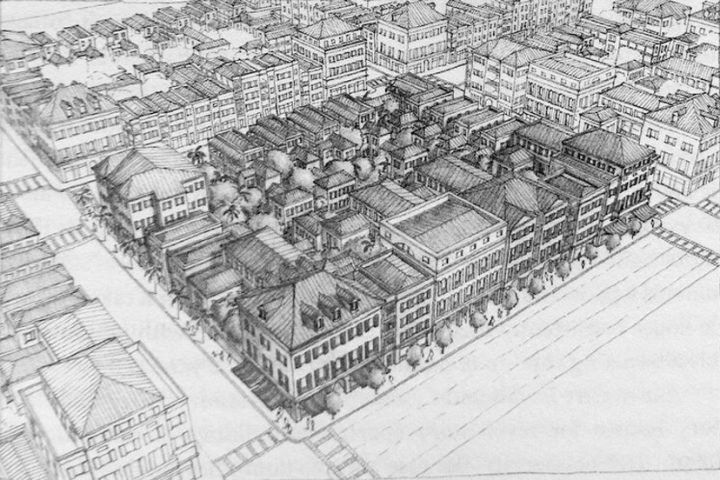This essay by John Pattison first appeared on the Strong Towns website on September 25, 2020.
You’ve heard it quoted or seen it printed on a motivational poster: “What would you attempt if you knew you couldn’t fail?”
That question can be useful when trying to move past fear or confusion and finally pursue a lifelong dream. But it can easily get us off-track when it comes to city-building. Why? Because we could fail… and remembering that fact, will go a long way toward building community strength and financial resilience. In fact, acknowledging the ever-present possibility of failure is so foundational to the Strong Towns approach that our friend Joe Minicozzi at Urban3 gave Strong Towns president Chuck Marohn a “Failure Is an Option” cap.
Knowing that even the best-laid plans can fail shouldn’t paralyze us into inaction. What it should do is cause us to think critically about what projects we pursue, how we pursue them, and how we evaluate success.
Failure Is an Option
Back in February, the former planning director for Vancouver, B.C. warned planners of the dangers of relying too much on mathematical models and forecasts. (And this, of course, was a month before the pandemic swept over North America.) He wrote:
We put too much weight on projections in city planning — population projections, economic projections, traffic projections. I’ve analyzed and created projections my whole career, and I know one thing — every projection is wrong. We just don’t know by how much, and in what direction.
Every projection is wrong. There is just too much we don’t know and can’t control. Failure is always an option. But you wouldn’t know that based on the types of projects our cities pursue. Here are just a few types we’ve highlighted over the years at Strong Towns:
Build-it-and-they-will-come transit projects, as with SR-59 in Akron or this stroad in Minneapolis.
All-your-eggs-in-one-basket projects, as in Milwaukee, where the city pinned perhaps too much of its economic hopes — a projected $200 million gain — on a Democratic National Convention that ended up being virtual.
Silver-bullet megaprojects that either fail to deliver on their promises (economic development, jobs, better traffic flow, a new leash on life for a struggling town, etc.), or stall out for years in the planning stage — like California’s high-speed rail plan — making for long and costly distractions from all the small, impactful things that could be getting done.
You also wouldn’t know that failure is an option based on how we build. We build all-at-once and to a finished state. As Chuck Marohn and Senior Editor Daniel Herriges discuss in our free Strong Towns 101 course, this locks our cities in stasis, condemns them to fragility, and blunts feedback.
To illustrate, Chuck and Daniel compare two neighborhoods: the “Texas Donut” style apartment complex, which fills an entire city block…
…and a single, traditionally-developed block in Charleston, South Carolina’s historic district.
The neighborhood in Charleston is able to achieve the same level of density as the apartment complex, but it can also flex under pressure. With so many different owners, it likely won’t experience cataclysmic change. When it does experience a shock — for example, a business closing — it can absorb the blow. There is a ripple effect, to be sure, but a complex system, like a neighborhood built by many hands, has the internal capacity to adapt.
Not so for the Texas Donut. Its many all-or-nothing failure points are “bundled together,” as Daniel put it. If the Charleston neighborhood is a tapestry, the Texas Donut is a pass-fail test. And if it does fail, the nature of the building (and probably the zoning laws regulating it) make it likely that it can only ever be apartments and that only an enormous amount of capital will bring it back to life. This same all-or-nothing approach is all around us. Not only in our residential neighborhoods, but in our commercial districts: office parks, industrial parks, our malls, and in the big retail spaces that have been sitting empty since the chain store found better digs elsewhere… or went bankrupt.

A Stronger Way
How does our approach to development change when we start by acknowledging that failure is an option?
1. It changes the scope of what we build. We will prefer small bets and incremental change over big projects locked in amber. With this approach, small failures are learning opportunities, not mortal blows. The energy for change comes from below rather than the top. We unleash the chaotic but smart vitality of the “bottom-up revolution.” We start by doing the next smallest thing to respond to the real needs of residents.
2. It changes how we build. The conventional way of building — what we call the suburban development pattern — is steeped in hubris. It presumes that we know everything we need to know (including the future, apparently) and that we will always have the economic resources to overcome adversity. If 2020 should teach us anything, it is that neither of these things can be counted on. Local leaders — city staff, planners and engineers, developers, community advocates, etc. — must take instead a posture of humility. The word “humility” is derived from humus, the Latin word for “ground.” That’s a reminder that leaders should be on the ground, in the neighborhood, observing where people are struggling in their daily lives… and observing whether or not the “solutions” to those struggles are actually working.
Which brings me to the final way in which the possibility of failure should change our approach to development:
3. It changes how we evaluate success. We need to design our cities to collect and adapt to feedback. As Chuck wrote last year, cities are complex systems that “require us to work incrementally as a way to obsessively seek out and respond to feedback.” This is the spooky wisdom our ancestors learned through thousands of years of city-building. But in 21st-century North America, we’re starting from the precarious place of “vertical and horizontal over-expansion”.
Instead of giving us a license to bold and decisive action (aka: gambling), these uncharted waters demand that we embrace the underlying complexity, obsess about feedback, and begin the difficult — but rewarding — work of iterating our way back to maturity. That’s what works, and that’s how we build a strong town.



